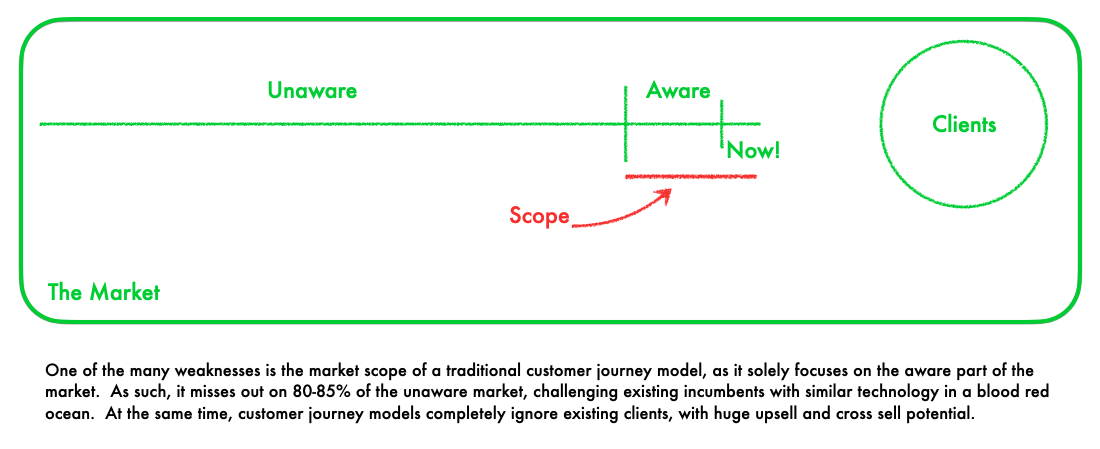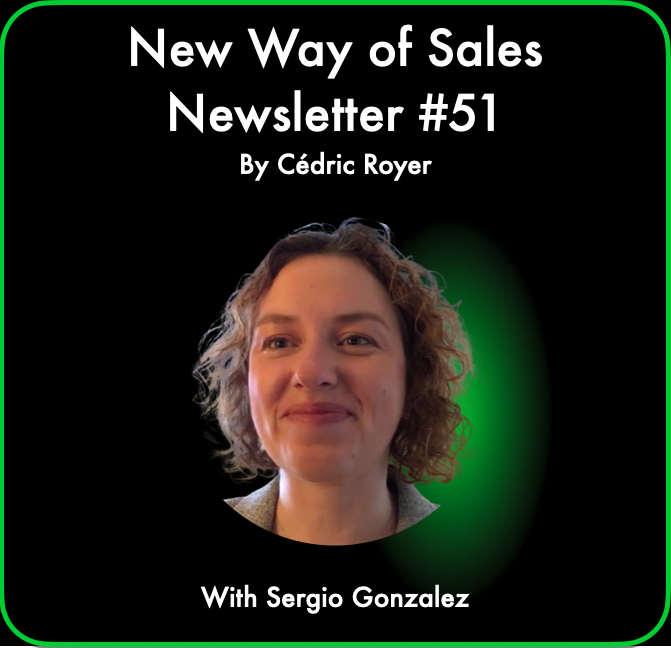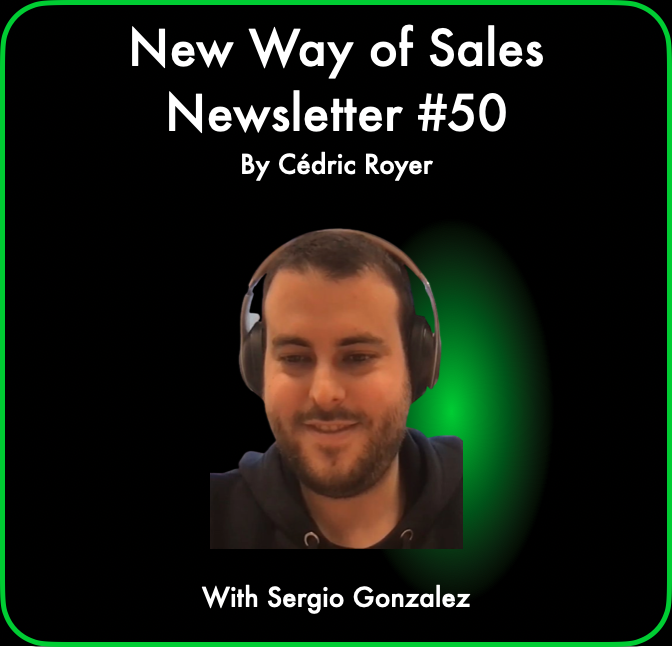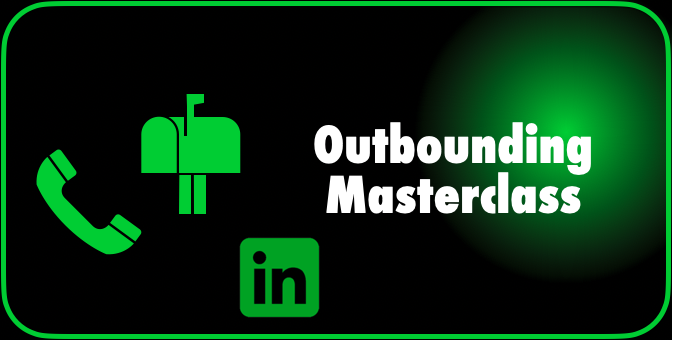I understand this will be quite the controversial post.
Sharpen the knifes, marketing gurus and consultants! But not before you have read the article, please 🙂
TL;DR
There are 5 major reasons why customer journeys are a huge waste of time and money:
- it is anti-strategy
- it is an oversimplification (with good intentions!)
- it relies on the awareness of a prospect
- it doesn’t address the status quo and impact of a change
- it relies on a small segment of the market
There is a better alternative, a so-called client experience journey, which meets following conditions:
- it gives you control over the process or journey
- it enables you to communicate your unique insight
- it starts at the unawareness stage and continues with existing clients
- it is proactive and includes outbound motion
🔥 Let’s get started 🔥
A so-called customer journey is a model that companies set up in order to map the number of steps that the prospect takes in order to come to a purchase decision.
The past 25 years I have been working for some of the fastest scaling companies in the world, startups and mature organisations as a sales leader or consultant, and I have never come across customer journeys.
I can also guarantee you that the impact on sales teams is zero, both for acquisition and account management teams.
Before we go further: I am compiling a report, “the state of the revenue strategy, 2024”. If you are a b2b tech CEO or sales leader, it would mean a lot if you can spend only 5 minutes to fill in following survey.

The acquisition teams I worked with are fully outbound driven, and we reached out to prospects, built a case and generally overachieved our targets.
And I’m sure some of you are saying, but then what about inbound leads? How did they find us?And yes, definitely there are inbound leads, and for this you have SEO strategy, you have SEA strategy, you have a content strategy, which is independent from a customer journey (while a customer journey cannot exist without).
5 Reasons Why a customer journey is a waste of time and money
Customer Journey as Anti-Strategy
In my opinion, a customer journey is anti-strategy.
It is dangerous.
It makes you dependent on external factors.
It makes you dependent on one part of the market that potentially finds you and contacts you and generates inbound leads. In my experience, inbound leads are 5 – 20% of the leads companies generate for the big majority of b2b tech companies.
A revenue strategy should be proactive, driven to reach a certain outcome and enabling you to maintaining control (predictability) to reach that outcome.
A customer journey model is by default reactive, not proactive, and based upon the ‘If this happens, then that is our (re)action.’
e.g. if this prospect attends a webinar, then we will contact them
e.g. if this prospect reads a blog, then we will create an MQL of them
(these are very simple examples and I understand tech can do much more than this).
An oversimplification with good intentions
The idea behind the customer journey is absolutely laudable: building a model to be able to map how buyers are actually going through the journey until the purchase decision.
The reality is that it is an oversimplification for several reasons:
- For every customer, the journey is unique.
- For every company, the decision to go find a solution is unique as is often the individual.
- For every individual the trigger is unique.
- For every customer, the customer journey omits a fundamental stage, which is the awareness creation.
In general a customer journey is never linear, making it impossible to create The Customer Journey.
Relying on the awareness of the customer
A customer journey relies extremely heavily on awareness of the prospect.
And also here we oversimplify: who is doing the research?
What job title, what responsibilities do they have?
(Which is often, none, as they could very well be interns.)
And when you look about certain job titles, it is not as straightforward as you’d like.
If you look at a real-life example of a client of mine who is in compliance, sometimes we do talk with certain people within compliance.
But oftentimes, legal is driving the project.
We also talk to IT, to security, to data management, the CEO and board.
And what about the status quo?
When people do start looking around, they very often start from the status quo.
They don’t start by saying, hey, we’re going to completely change your infrastructure here.
That’s way too big.
That is a change.
Change takes time.
Change is risky.
We all know within sales, the status quo is our biggest enemy.
That’s why we lose deals.
It’s not -just- because we have competitors with our clients.
Imagine you’re a new supplier or a challenger, and you build a customer journey, and you need on getting that change through….
This is a massive step your prospect has to take, and there is a big chance you will lose out.
When we do take our competition into account, your biggest competitor is the incumbent, OR the vendor that is first talking to the customer.
It is a fact that when you’re the first vendor, that you’re the standard, and everybody coming after them will be compared with them.
If you are competing against an incumbent, and they are ‘good enough’, then not any one customer journey will help you to that purchase decision.
Who are we targeting with a customer journey?
A customer journey only focuses on the aware part of the market -the ones that are actively, but not necessarily urgently looking.
We do not focus on the 85% of unaware side of the market!
That’s a very big effort, for such a small part of the market, right?
What IF we decide to use a customer journey (as a strategy)?
If you would rely on that customer journey, starting from the idea that people are aware and are actively out there looking for ‘a solution’, then you agree that they go to events, attend webinars but definitely go searching on the Internet, go reading up on market research.
This means they go to Google, read Gartner reports, read trends and follow tech giants like Salesforce, Microsoft, NVIDIA … about what they have to say. They go to Capterra to read reviews… And they go to Youtube or even ChatGPT to get information and inspiration.
In other words, the minds of the people searching is shaped by what those organisations are ‘predicting’ or claiming.
If you are a startup, scale-up, or 2nd tier company then I wish you good luck being found by the customers on their journey.
If you’re not in Gartners Magic Quadrant?
If you don’t have a content engine?
If you don’t have massive SEA budget?
…
Customers simply won’t find you.
As a side note: content strategies work, social coverage definitely work, over a longer period of time, pre-awareness, in other words pre-customer journey time 😉
But then what?
The Client Experience Journey – Better fit for purpose
There is a better approach, one that is far more impactful with a wider reach than just 15% of the market and zero percent of your clients.
What a better solution should look like
Before we talk about the solution, in my opinion there are 4 criteria a better solution should meet:
- It should give you control of the process
As we established earlier, a strategy is active and definitely proactive, not reactive. In shaping your story, in creating a high value customer centric experience you should control the steps they should be taking.
- You should deliver a unique insight
In order to stand out, and ‘be first’ taking control also means delivering a unique insight. Chances are your potential clients don’t know the problem, root cause and the solution you have, based on the unique insight you have, which means they will never look for your solutions (at least, not your unique approach).
While this means you will more than probably do drive traffic based on ‘traditional keywords’ in order to reach some people that are aware already, you will use this to drive your insights home. This article here is a good example.
- It should start before the awareness stage and continue with existing clients.
This logically means that the journey you will build for (and with) your prospect (and later client) should start ideally before the awareness stage so you can shape that awareness via your insights, as it gives you an excellent opportunity to position yourself as the subject matter expert.
And the journey continues after the first deal generating long term partnerships.
- It should be proactive and outbound
Building upon the previous conditions, it means your effort should be outbound and proactive.
Proactive: your marketing initiatives will consist largely in evangelising the market, positioning yourself as the subject matter expert and market leadership and you will create channels to do just that, like newsletters, webinars, podcasts, ….
Outbound: on the sales side, outbound remains hugely important where you can use several techniques like solution selling, consultative selling and/or the challenger sale, within the same framework of subject matter expertise. Your sales people will both target unaware as well as aware prospects and will be equipped with the right tools, data, insights and storyline to build a case (and close a deal).
One of the fallacies of a customer journey is that it only takes into account aware prospects. Thanks through outbound activities, we are able to also target unaware clients to a business case, before they realise they should go on a journey.
Imagine you go to a CEO and tell them that based on your research you can help them improving their margin by 1% by implementing their system, which would result into a 5% higher shareholder value. Until you contacted that CEO, they were probably looking for ways to improve their margins, but didn’t know how, until you reached out to them.
In this example you skip the ‘awareness stage’ -at least, it is reduced to the aha-moment while delivering your business case to them.
The Client Experience Journey
The CEX executed through the Revenue Operating Model is the ideal approach.
Is it client centric?
Yes, in the sense that we deliver value during every step from unawareness to awareness to project stage (both for prospects and existing clients).
Yes, in the sense that we help the client taking the steps to getting to a solution that helps them.
After all, often we expect (hope, assume,… think) that clients know what are the next steps they will take, but let us not forget the following:
- it is very likely they have never purchased a similar solution,
- it is very likely they have never had to solve a similar problem,
- it is very likely they have never known what is really possible on the market,
- it is very likely they have never looked at the problem (and solution) the way you do -remember the unique insight,
- and sometimes they have just been misinformed by other market players.
It is very easy to integrate a client experience in your revenue operating model, something we covered in an earlier newsletter:
The demand creation stage (where roughly clients are unaware)
The demand capture stage (where clients are aware and looking for a solution)
The revenue creation stage (where clients are looking to purchase a solution, and where we are looking to close a deal, and with existing clients to deepen the relationship)
Now, how to start with a client experience? This would make the article way too long and is for another post 🙂
And this was it for the week.
I am curious to know what you think about it. Feel free to reach out, and like, share and subscribe if you like!
How can I help you?
For b2b CEOs and sales leaders: Whether you are looking to increase your growth or your profitability, you need an efficient approach. ****Let’s talk! here.
For b2b sales leaders: You have the hardest job, and often the least supported. I am building a program to change this: contact me to learn more cedric@jump.foundation (and more info coming soon).
For b2b Tech CEOs < 1 million ARR: I have a dedicated program for Founder Led Sales CEOs, looking to scale. You find more information here.
Participate in the report: ‘State of revenue strategy in tech. 2024’. I would love your input, and you can participate here by spending 5 minutes to fill in the survey.




